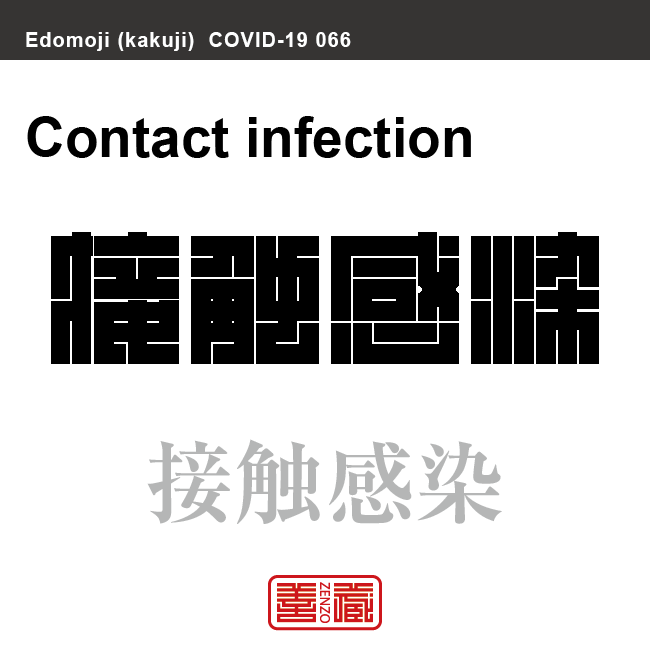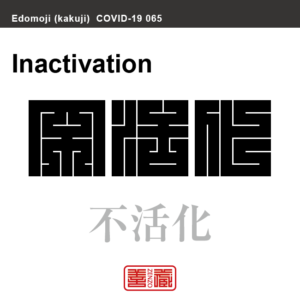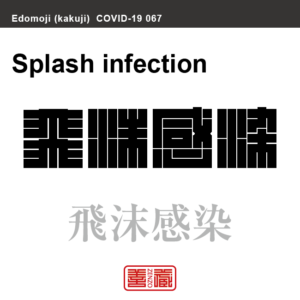接触感染 せっしょくかんせん 角字で新型コロナウイルス感染症関連用語、漢字表記

接触感染
せっしょくかんせん
Contact infection
Unicode: [接_0x63A5][触_0x89E6][感_0x611F][染_0x67D3]
感染症の感染経路のひとつで、皮膚や粘膜の直接的な接触や、人間の手や医療器具、手、ドアノブ、手すり、便座、スイッチ、ボタン等の表面、タオルなどのような物体の表面を介した間接的な接触により、ウイルスや細菌(病原体)が付着することによって生じる感染経路のこと。
接触感染を防ぐためには、感染源になるものに触らない、帰宅後の念入りな手洗い、消毒、手が触れる箇所のこまめな清掃、人体同士の接触の制限などが効果的です。
角字とは?
江戸時代に誕生した角字は、正方形のグリッド内にほぼ水平・垂直のラインのみで文字(漢字)が表現されるグラフィックアートです。
正方形という限られた空間の中に、あらゆる文字を閉じ込めようとするグラフィックデザインは、前述した、ミニマムな物に対する日本人特有のこだわりが随所に感じられます。
そのシンプルで有りながら、奥深い「角字」は多くの日本人を魅了し、お祭りで着る半被や印半纏(しるしばんてん)と言われる着物や、商標、印鑑、家紋、看板デザインなどに今日まで数多く使用されてきました。
What is Kakuji?
There is a style of penmanship called “Kakuji” in Japan. Edo-born Kakuji is a graphicart that expresses letters (kanji) with almost horizontal and vertical lines only.
The design which bases on many straight lines seems simple, or too plain even at its first glance; yet this beautiful artistic penmanship that encompasses the aesthetic of the Japanese in the Edo era, also known as “Iki”, and playfulness has long been inherited to this day, thanks to the masteries’ long years of efforts in training and refinement.
Kakuji with its simplicity and depth is used for designs such as trademark, hanko stamp, family crest and signboard.































































 2文字コード:MZ 3文字コード:MOZ 数字:508 ITU:258 ccTLD:.mz
2文字コード:MZ 3文字コード:MOZ 数字:508 ITU:258 ccTLD:.mz







































































































































